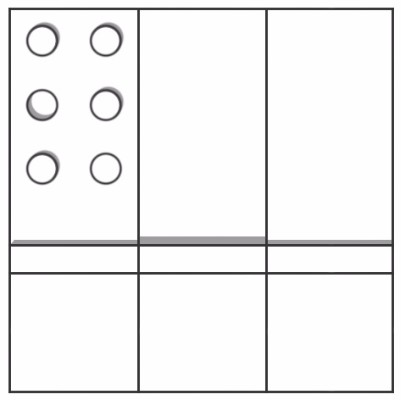
Residential - Apartment
A precious “jade” glazed box containing an elegant kitchen facing the volume of the living room both enriching and widening its perceived volume.
The proposed project optimizes the spaces of the lower mezzanine section partially reshaping the bathroom, moving the laundry in the corner area with the small available window and placing the kitchen volume adjacent to the living room thus using a portion of the previous corridor, serving the bathroom entrance, as part of the kitchen area that gains more room.
The focus is the kitchen volume (and its aesthetic values) separated by that of the living room with a transparent thick glass made of 3 sections: two side-hang doors allowing separate entrances to the kitchen and a central fixed one corresponding to the visible furniture section. This glazed separation, placed in front of the wall opening, is shaped as a theatre flat scenery (inspired by the baroque style pertaining to the historical palace in which the apartment is located) that plays with the gable roof shape of the wall and balances the otherwise limited height of the kitchen.
It has been thought to allow the placing of one of the more refined coffered Chinese furniture just in front of the central section.
The interiors of the kitchen are characterized by a simple worktop central section (between the two doors leading to the bathroom corridor and the laundry) containing a 2 holes sink, a 5 burners hob under a single thick shelf that holds lights and an extracting hood, and a dishwasher. A console close to the transparent wall allows the placement of 2 stools and an extension of the kitchen worktop. On the eastern short side of the kitchen are placed a tall container, a recessed oven and a voluminous fridge. On the opposite wall a door giving entrance to and hiding the mezzanine stair is flanked by two sliding containers taking advantage of the volume available under the same stair.
The finishing of the kitchen walls and ceiling is obtained by painted glass (AGC Lacobel) glued to metal frames that are also providing the support for doors and panels of the recessed appliances, while the flooring resembles a majolica one. The height of the kitchen’s ceiling has been set assuming that the 2,4 meters of the mezzanine section is at the intradox of the floor-plank thus considering that of the wooden trusses as the available one.
The furniture aesthetic of the kitchen are thought in two different solutions depending on the two colors variations of the glazed walls: the more vivid “luminous green” is paired by dark burgundy lacquered surfaces and light grey natural stone worktops and shelf combined with a green and red majolica floor, while the “light pastel green” is paired with pale sand artificial ceramic sides, worktops and shelf, same color lacquered panels and a whitened durmast console combined with a green and blue majolica floor.
The living room is furnished with most of the client’s available furniture distributed in two different sections: the one on the kitchen side with the two-seats sofa facing the existing fireplace and completed with a design extendable table with six chairs and the one at the entrance characterized by the wide bookshelf (enriched by the use of a Tibetan style wallpaper as its backing), the three seats sofa and armchair plus the Castiglioni’s Archos design light.
A revised accent artificial light set is based on: 4 black tubular pendant dimmable lights focused on four key areas including the new table, 9 grazing led lights added to the top of each section of the bookshelf and the same kitchen lights leveraging on the reflective qualities of the glazed surfaces.